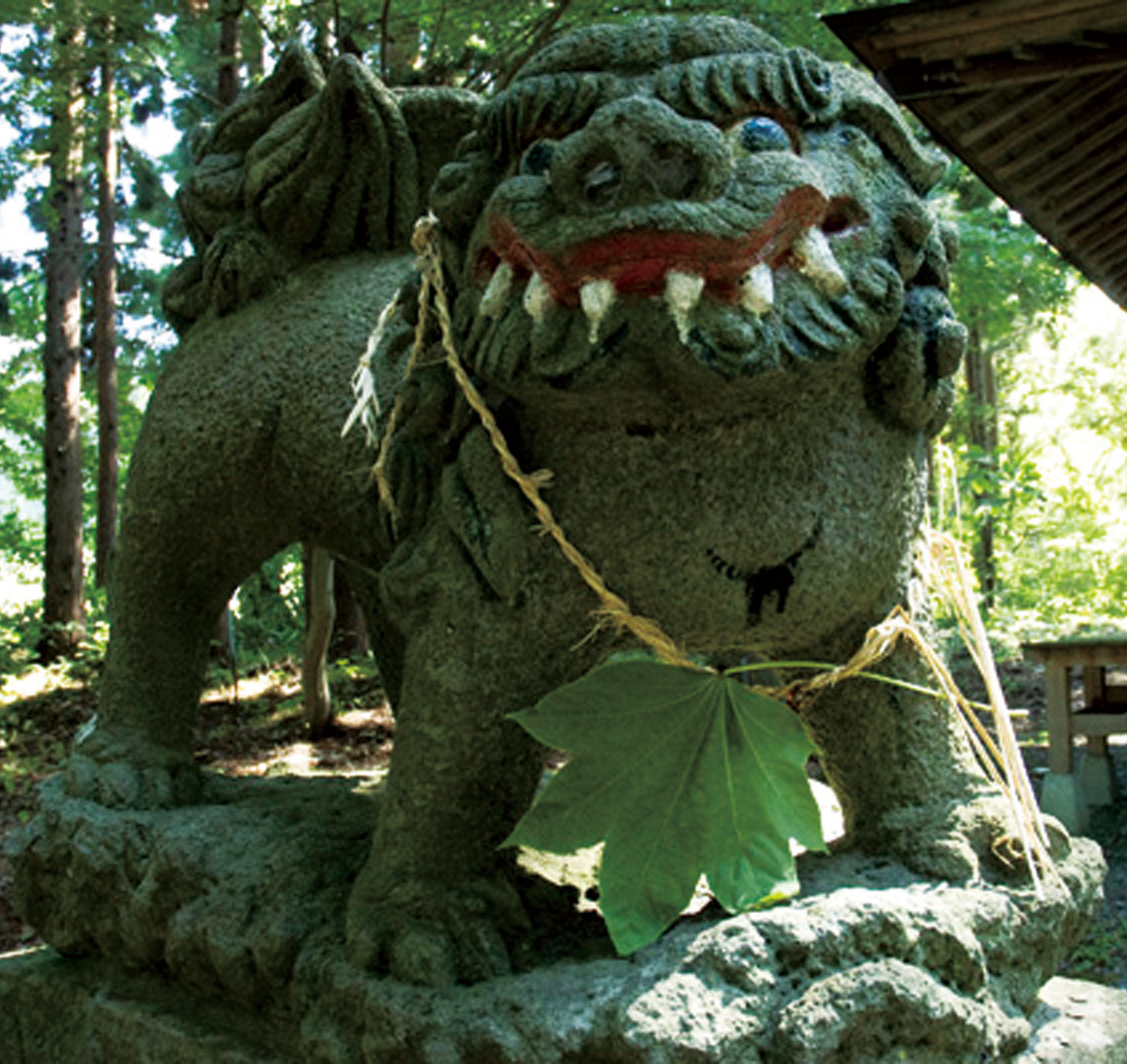日吉神社のハリギリ(Hiyoshi Shrine prickly castor oil tree)


(上:日吉神社のハリギリ、ハリギリの葉|Above: Hiyoshi Shrine Prickly Castor Oil Tree and one of its leaves)
推定樹齢(Estimated Age) 不明(Unknown)
幹周合計(Circumference) 4.88m
樹高(Height) 24.00m
青森県内最大級 Ranked among the largest in Aomori Prefecture
ハリギリは日本全土に分布します。若木は枝や樹幹にとげがありますが、老木になるに従い鋭さを失い瘤になります。幹の樹皮に深く縦に入った筋(裂け目)がこの木を特徴づけます。
葉柄は長く、葉身は掌状に裂し、カエデのような姿で大きく、天狗の団扇のような形をしています。そこから「テングウチワ」と呼ばれることもあります。
日吉神社(俗称山王権現)は、晴山沢・平内・田代・金山沢の4地区のウブスナ様として代々崇拝されてきました。
Prickly castor oil trees grow all over Japan. Young trees have thorns on their branches and trunks, but as they grow older, they lose their sharpness and become bumps. The bark of the tree is characterized by deep verticle crevices.
The leaf stalks are long, with a leaf blade that splits into five sections and is large like a maple leaf. Because the leaves bear a resemblance to a Tengu's fan, they are somtimes nicknamed as such.
Hiyoshi Shrine (commonly known as Sanno Gongen) has been a place of worship for generations of residents in the surrounding districts of Hareyamasawa, Hiranai, Tashiro, and Kaneyamazawa.



